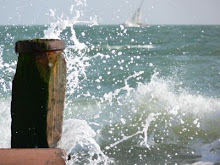
Statues at the gate of the Palm house. The Palm house was constructed in 1844 by Richard Turner the world's most important surviving Victorian glass and iron structure. The Palm House was created specifically for the exotic palms being collected and introduced to Europe in early Victorian times. The elegant design with its unobstructed space for the spreading crowns of the tall palms was a perfect marriage of form and function. The technology was borrowed from shipbuilding and it can be seen that the design is essentially an upturned hull.
The unprecedented use of light but strong wrought iron 'ship's beams' made the great open span possible, giving room for the unhindered growth of tall specimen palms.For its tropical plants, the Palm House needed heat. Originally, the boilers were in the basement, heating water pipes under iron gratings on which the plants stood in great teak tubs, or in clay pots on benches.
The smoke from the boilers was led away through pipes in a tunnel under the Palm House Pond to the elegant Italianate Campanile smoke stack 150 m (490 ft) away. The tunnel also housed a small railway which transported coal the the Palm House boilers. However, the basement flooded in 1848, it took several years to lower the level of the water by pumps. In 1853 the floor level of the boiler room was raised, which had the unfortunate effect of reducing the amount of draught to the flues, badly affecting the efficiency of the heating system and making some parts of the Palm House too


Canna Lillies


Some giant leaves

The water vapor pours from the ceiling pipes at intervals to keep humidity high

Bromeliads

Some sort of Hibiscus?

Beautiful Frangipani









No comments:
Post a Comment